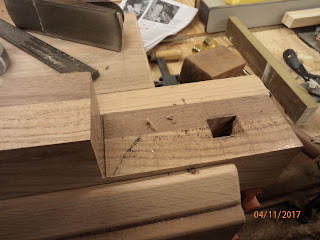Search for a Shed Builder/Supplier
We visited several places in town for quotes (Knechts, Pro-Build, and Ziggy's). The prices were very close for the same product. We selected Ziggy's in Rapid City, SD, as our supplier for a 12' x 20' (+) shed with a five and a half foot side door, a window on one end and primed T11 plywood walls, that would require painting to match the other buildings on the property. This was the best value for the price. It was already built, as it had been built to be used as their office after the devastating fire in 2014 that destroyed a major part of the store. Matt Ziegler said he could deliver it the next day after I called him to tell him the pad was ready. The shed was purchased on 4-18-2017.
The location we chose was north of the shop for a shed for wood storage. This would provide easy access from the shop, and a fantastic view from the shed window. It was pretty level with only a small slope, about one foot drop over 24 feet. We would need to build a pad that would put the shed above the water drainage area and allow for room to level it.
We contacted The Rave Brothers (Steve Rave) to do the dirt work for a pad for the portable building.
On Thursday, April 20, 2017, Steve Rave dug up the topsoil with his Mustang and then built up the shed pad with two dump truck loads of road gravel - equal to 25 tons of rock. That is 50 loads of rock if you used my 1/2 ton pickup. Steve finished leveling the pad on Friday afternoon, as we left to set up of the 9th annual woodworking show at Knecht Home Center.
Shed Delivery
I called Matt Ziegler on Monday morning April 24th, to let him know we were ready with the pad anytime. He set up a time for Tuesday at 7:30 am. However, a snow storm was expected on Tuesday morning, so later on Monday, Matt called back to see if we were home, so that they could try to beat the storm and bring the shed out today. We were home, and at 3:35 pm, they arrived with the shed.Kathie has volunteered to help paint the building with an exterior latex and then the trim to match the trim on the house and the garage, using a semi-transparent stain. The shed has several shelf brackets attached to the wall that can be used for storing wood. With a little more elbow grease, the shed will be ready for use. We will need to build a nice wide but short step at the door, replace the door lock hardware, and it would probably be a good idea to research rain gutters, as this shed has no overhang on the roof.
The followup: what a difference a day can make - the storm did come and the decision to bring the shed on Monday was a wise decision. It would have been very difficult to see the lines on Tuesday...
Click here to see a story about the first shed purchased back in May 2012:


















































































